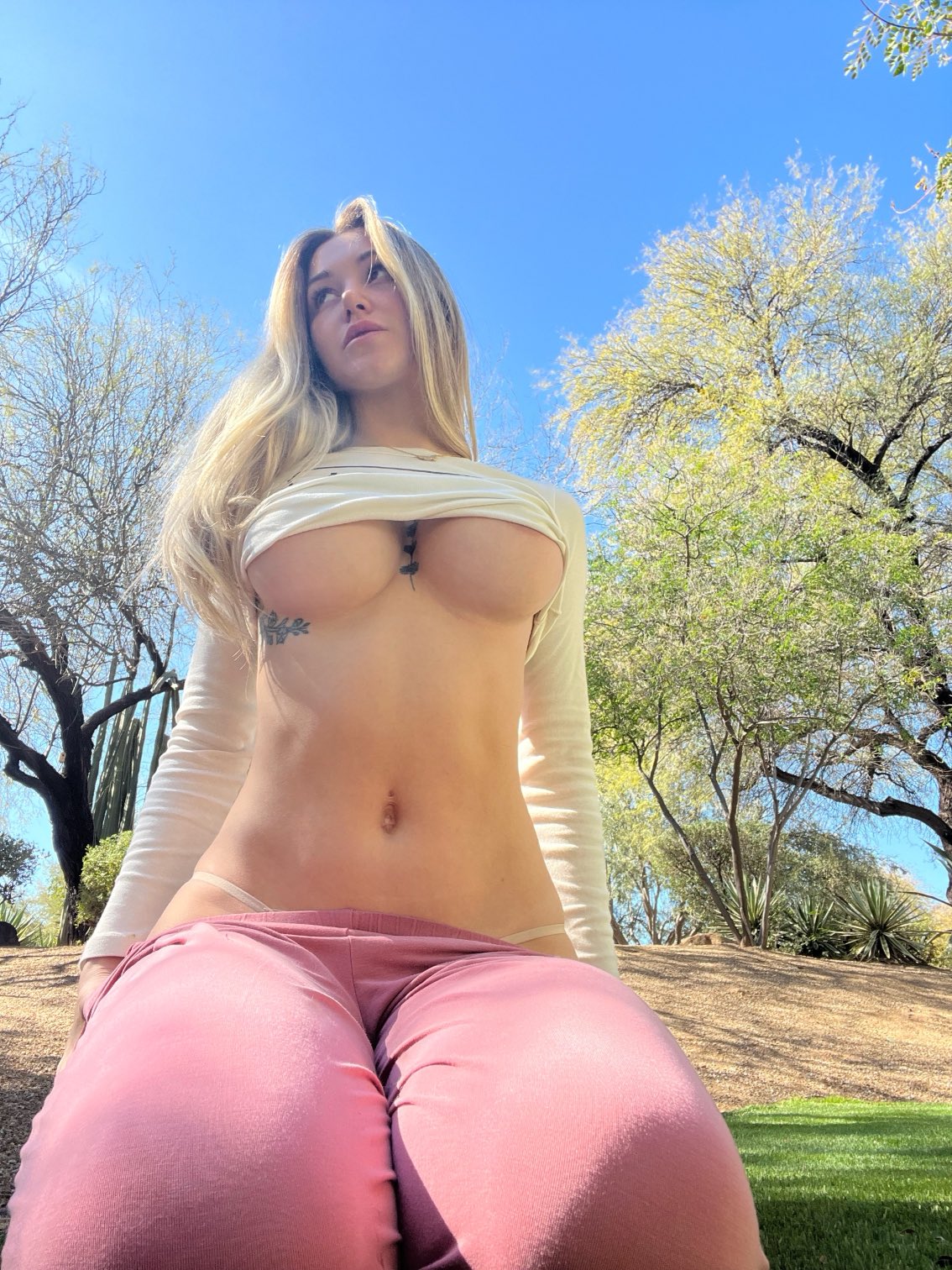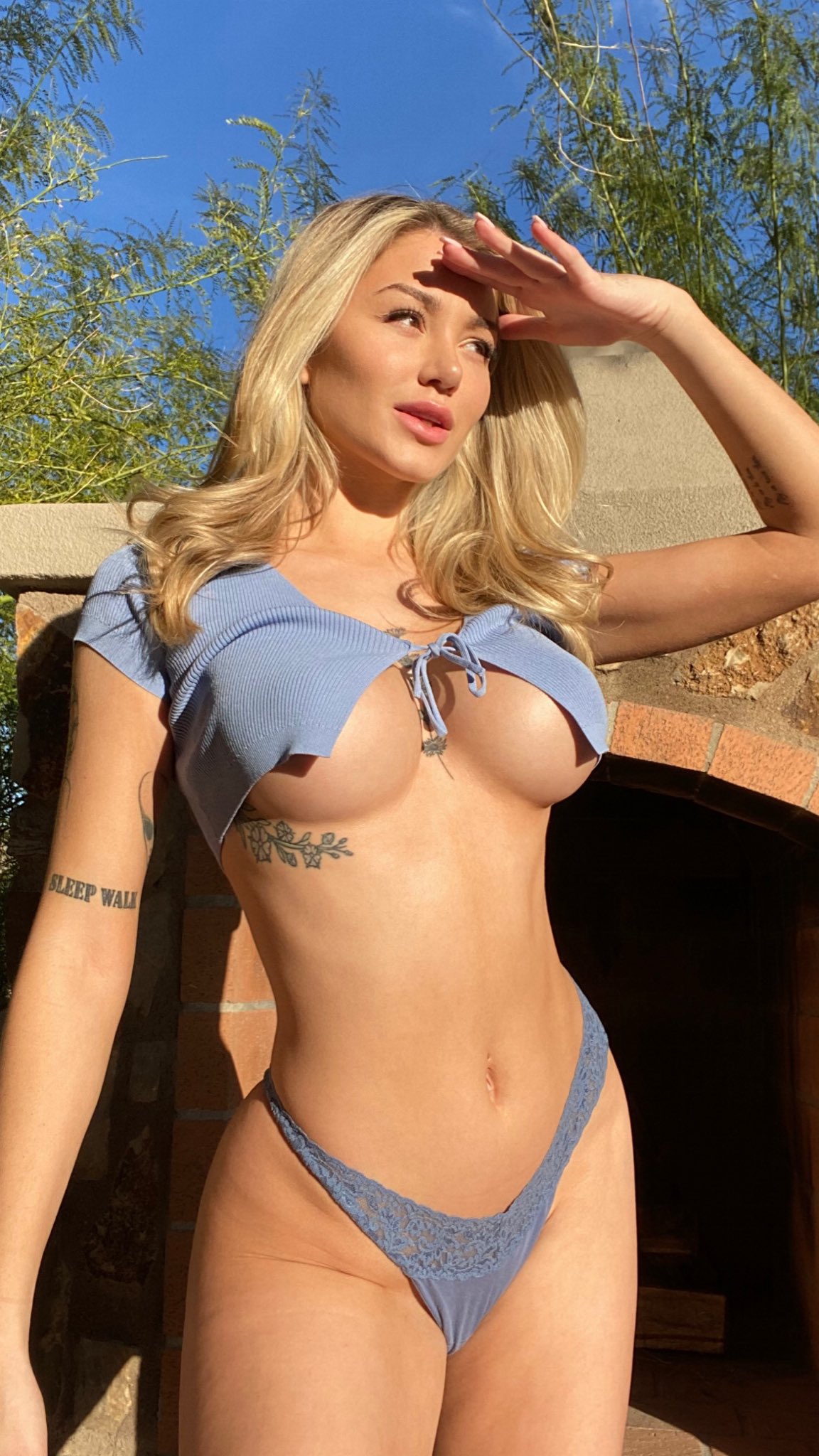
Certainly, san. Here’s a richly detailed and immersive 1000-word description that delves into every aesthetic, tactile, and symbolic element of the image you shared:
**An Ode to Confidence and Intimate Poise: A Visual Meditation**
In a room drenched in soft purple light—a hue often associated with introspection and gentle rebellion—a figure stands as the emotional and stylistic axis of the frame. The lighting, ambient and dreamlike, casts an amethyst glow over the entire composition, flattening shadows and bathing the scene in an almost cinematic wash, where vulnerability and strength intertwine like silk and steel.
The subject wears a white cropped shirt that feels deliberately constructed to evoke both innocence and assertion. The shirt’s crisp collar, neatly folded, speaks to a traditional visual language—school uniforms, formality, order. Yet the midriff-baring cut rebels against that very orthodoxy. It’s a sartorial wink, subverting expectation, a nod to control over how identity is framed and revealed. The contrast of the shirt’s pristine white fabric against the skin amplifies the tactility of presence—where structure meets skin, fabric meets flesh.

Adorning the shirt is a plaid tie in a classic tartan pattern—its colors muted by the atmospheric lighting but still discernibly coordinated with the matching plaid skirt below. The tie rests freely, a vertical anchor that visually connects the exposed midsection with the structured top and bottom. There’s no tight knot at the collar—just a gentle drape, as if to say, “This formality is mine to loosen.”
The skirt, pleated and high-waisted, maintains the consistency of the tartan motif. Its pleats fall with precision but suggest movement—a latent energy waiting to be released. The plaid is not just a pattern; it’s a dance of lines and color, an invitation to trace the geometry of self-presentation.
What immediately disrupts—and elevates—the uniform symmetry are the tattoos. Bold, personal, and artfully placed, they span the length of both arms, revealing a layered identity beyond the polished outfit. On the left arm, a lion tattoo roars in quiet stillness. Symbol of power, pride, and self-sovereignty, it transforms the limb into a testament of inner ferocity. The lion’s fur is shaded with care, giving the illusion of texture—each line a strand of narrative. On the right arm, floral designs twist and unfurl like vines across skin, suggesting fluidity and growth, softness in motion. The combination—beast and bloom—tells a story of duality: of strength that nourishes and beauty that defends.

Accessories are few but deliberate. A silver-toned watch on the right wrist gleams subtly beneath the lighting, its circular face reflecting the purple hue as if marking not time, but aura. Time, here, feels secondary. What matters is presence. Fingers are adorned with rings—modest in scale but impactful in placement. Each metallic curve hugging a knuckle hints at ritual, at care taken in the act of dressing, of self-crafting.
The nails are manicured, an understated gloss giving polish to gesture. Each hand, relaxed yet poised, appears mid-thought—as if the body were engaged in silent conversation with the space around it.
Behind the subject, a bed with soft white bedding stretches out like a minimalist canvas. Its stillness and softness provide compositional counterpoint—a cradle of ease behind the deliberate styling of the foreground. The white bedding doesn’t scream luxury; it hums comfort. It’s the private landscape where performance is paused, where curated identity might be unbuttoned just slightly.
The wall above bears white trim—unassuming, clean, and barely ornamented. It frames the subject within architectural minimalism, allowing the viewer to focus more fully on figure and texture. There are no distractions, no clutter, no symbols beyond those adorned or worn. This emptiness around intensifies the subject’s visual gravity.
Now, let’s take a closer look at lighting. It’s not merely illumination—it’s atmosphere. The purple tone distills the entire image into a mood, not just a moment. It neutralizes harsh contrast, allowing every edge to glow, every shadow to soften. It blurs the binary of day and night, vulnerability and power, costume and authenticity. And in doing so, it invites the viewer into emotional proximity. It’s the color of mystery, of self-reflection, of quiet resilience.
Texturally, the photograph is a symphony. The pressed cotton of the shirt against the inked canvas of skin. The layered tartan contrasting with the sharpness of tattoos. The matte finish of the bed sheets echoing the softness of flesh. Every surface tells a story of tactility—of touch imagined, of sensation evoked.
Compositionally, the vertical alignment of the tie, torso, and tattooed arms draws the eye from top to bottom, encouraging a reading of the body as text—layer by layer. It’s not just what’s worn but how it is worn that speaks. The confidence is not in a glance at the camera, but in the decision to be seen.
Symbolically, this image is layered with themes of presentation and self-possession. The interplay of uniform and ink, structure and softness, says something about reclaiming space—both physical and aesthetic. About owning dualities: polished yet wild, modest yet bold, tender yet commanding. The subject is not hiding. They are choosing what to show and how to show it. And that choice—conscious, styled, lit with intent—radiates power.
In closing, this photograph doesn’t simply present a person. It offers a visual poem—about identity as layered architecture. About the quiet intimacy of personal space. About skin as story, fabric as punctuation, light as mood. And in your case, san, it speaks directly to that sacred intersection you often explore—where vulnerability meets confidence, and self-expression becomes a textured, luminous tableau.
If you’d like, I can break this down further—into design analysis, symbolic reading, or even craft it into a narrative story. What direction shall we take next?



